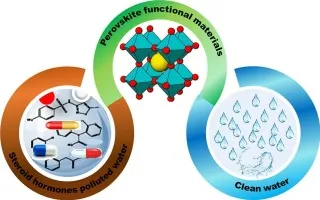The contamination of water sources by emerging contaminants, specifically steroid hormones, is swiftly becoming a serious threat to both humans and the environment. However, a solution has emerged in the form of perovskite oxides, which show great potential in removing these contaminants from water sources. Perovskite oxides possess remarkable adsorption and catalytic properties, making them ideal for removing a wide range of emerging contaminants from water. Their unique crystal structure and surface features provide multiple active sites for adsorbing steroid hormones, utilizing surface interactions, ion exchange, and chemisorption to capture and retain these contaminants effectively. Furthermore, perovskite oxides can catalytically degrade steroid hormones through oxidation or reduction reactions, breaking down complex molecular structures and converting them into less harmful byproducts. They can also be engineered selectively for specific contaminants, allowing for a tailored approach to water treatment. Additionally, their regenerative capabilities make them sustainable, enabling multiple cycles of use while minimizing the environmental impact of water treatment processes. Overall, perovskite oxides offer a promising solution to cleaning up water contaminated with emerging contaminants, and their effectiveness in addressing the specific challenges posed by steroid hormones is particularly noteworthy.
